Art and Crafts of Kutch: Part 1 – Visit to Village Nirona
When I started my journey to visit White Rann of Kutch; my train ticket to bhuj was not confirmed; I was unfit to travel and was really bad at health. I was unsure weather I could travel or not; but this time I just wanted to make it happen. When I reached to Bhuj, I was amazed to see that how much quiet and peaceful it was to be there. I had no itinerary in my mind; I did not have ample information about the other places; the only thing I knew was I want to visit small villages of kutch where rural life exists; where I could interact with the local artisans for understanding Art and Crafts of Kutch. And actually when I strolled through those little villages I hooked upon them; there were no sign of any cheating in the behavior of locals nor they insisted me to buy anything from them; they were just happy to show me their art.It has been a month that I returned from Kutch; but still the conversations with them are running in my memory.I left a piece of my heart there.

Kutch is well known for its exquisite art and crafts being it embroidery, leather work, weaving, block printing,batik, and many more. During my visit,I witnessed artisans at work at their houses cum work shops. The Kutchi people add color in the salty white desert with their arts like Rogan art, lacquer art, pottery, metal crafts to name a few. You can see the mud and mirror works on the walls of Kutchi Bhungas. Almost everywhere you can see the colors of Art and Crafts of Kutch and they seem important part of their everyday life. I was amazed to see there are so many art forms available in this area.

There are several communities involved in these different art works.The Khatri community are the dyers and produce Bandhani (Tie & dye), block printing and batik (wax printing). Hand-loom weaving of Kutch is done by the Harijan community using wool, silk and cotton. Ahir,Rabari communities mostly engaged in weaving cloths and making embroidery by their hands. Each community of Kutch has its own style, colors and motifs that represent nature, geometry or religion. One of the highlight of my trip was visiting these small villages and talking with locals about their life and about the arts. These handicrafts are the source of income for them.
My first stop was Village Nirona before the Great White Rann. It is home to Lacquer work, handmade copper bells and most fascinating Rogan Art.
Rogan Art:
Our Prime Minister Narendra Modi gifted a piece of Rogan Painting to Obamas when he visited US in 2014. Traditional Indian handicrafts reflect the culture and history of the place they come from. Rogan Art- originated in Persia and came down to Kutch around 400 years ago. In earlier days it was used for bridal clothing of regional tribes for making Ghaghara Choli etc. But now a days it is mostly used in wall pieces.
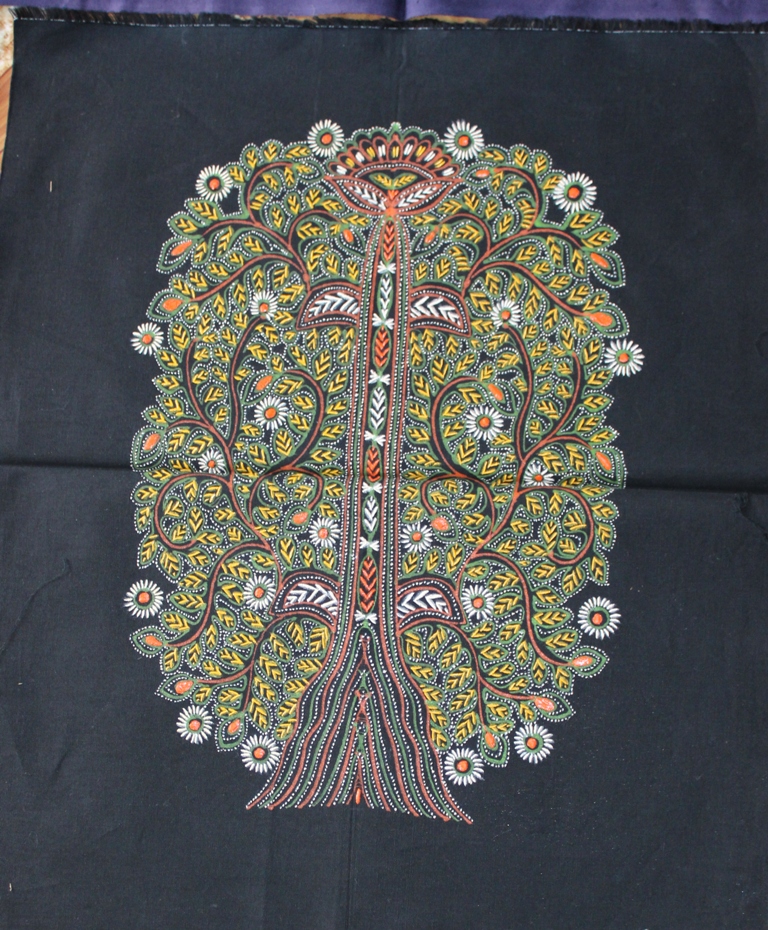
At Nirona, only two houses resemble of this art; the predecessor of Abdul Gafar Khatri Family. It is the only Muslim Khatri Family in India which resembles this art at tiny village Nirona of Kutchh. As I entered in the small house, Rizwan Khatri opened a box with lumps of color in liquid that resembles water. He dipped a metal rod inside the color box, swiftly rubbed it on his palm and then started demonstrating it on the piece of the cloth. He explained that by rubbing it with the palm end; it creates Paint like Paste. His hands were creating a magic on the piece of the cloth. It looked, as if he was creating designs effortlessly; but I knew it was not that easy to execute. Further he said that it takes several years to master the art and create it. He made a flower on the cloth and showed us his amazing work pieces which were kept for sale.
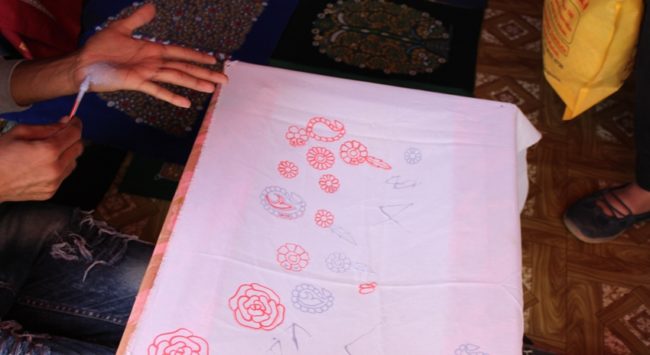
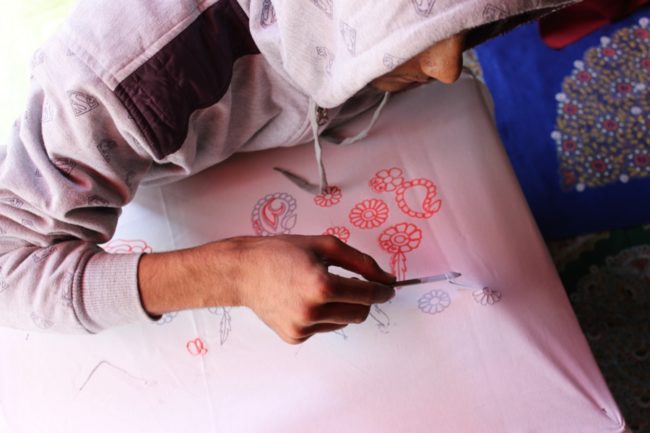
Rogan- which means oil based in Persian language. In this art form, Paint is made using castor oil as castor is a crop commonly grown in the barren land of Kutch in Gujarat. Rogan is prepared by heating castor oil to the boiling point for 2-3 days; cooling it and as thickens the residue; natural colors are mixed in it. The residue with colors forms paint like substance and they are kept in pots with water to keep them moist. A thin iron rod with blunt ends is used to paint.

The painting takes quite a time to complete from 1-3 months depending on the work involved and intricacy of the work. As he explained, first outlining is done, then work is filled, then after drying it colors are added and again the work is done. If symmetric work is involved, the fabric is half folded from the center to get the impression on the other half to reduce the efforts. Mostly tree of life, peacocks, flower patterns are used for making wall pieces, stalls, purses, dupattas, dresses etc.
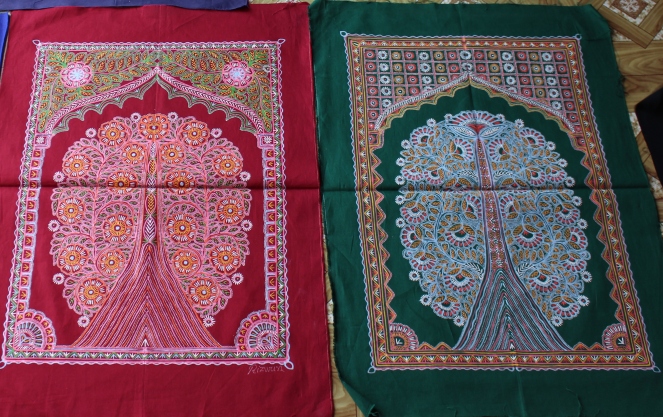
They sell their precious pieces to well known fashion brands like Lakme, sabya sachi and the products are famous among Bollywood celebrities. The several generations of the Khatri family has been involved in this art and today only 8 family are members mastering this tradition today. Rogan art is an example of spell bound dying art in the modern edge of technology. It is good to know that Rogan Art is now getting recognition.
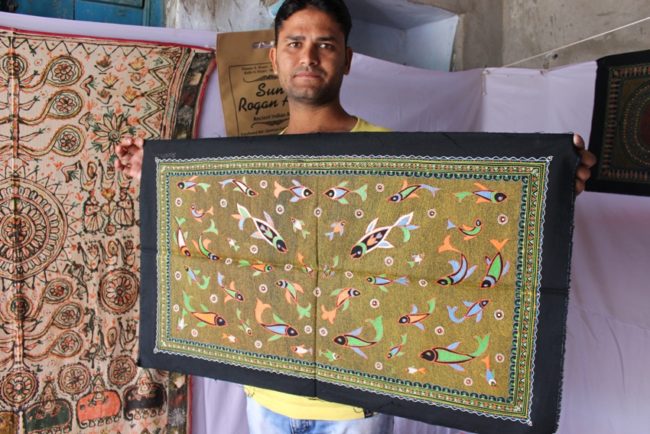
After the Rogan Art workshop, I started walking through the narrow lanes of the village Nirona to Copper Bells maker’s house. Currently only two village’s makes these type of bells – Nirona and Zura. The Handmade copper bells are made by Lohar Muslim Community here.
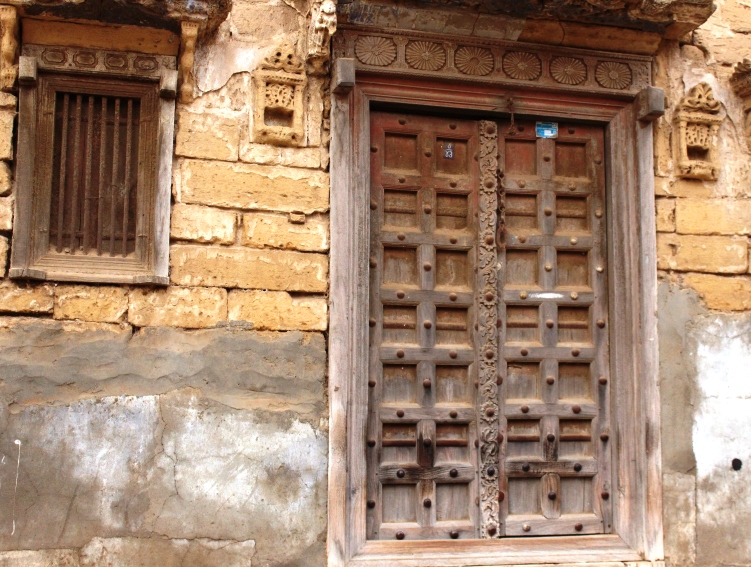
Copper bells are made using waste irons from damaged cars, iron plates and recycle them to make a useful piece. Husen Sidik showed his art of making bell in front of my eyes; he created magical masterpiece without using any welding. The thin copper strip is converted into a bell. There were so many pieces for decorating a house using copper bells; I couldn’t resist buying one.
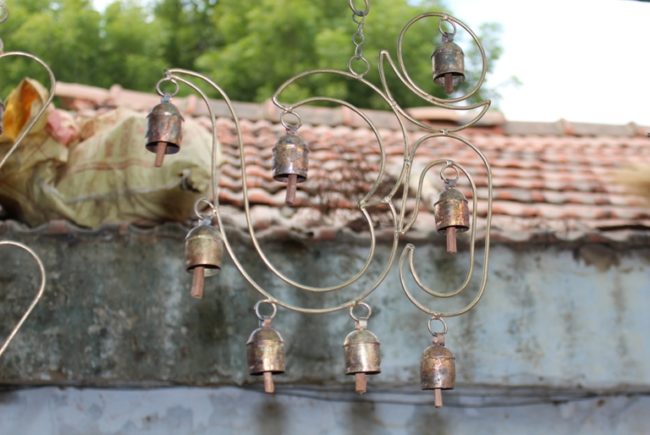
Other than this you can witness the lacquer work in various colours that is passed with great skill on the wooden object of focus in beautiful waves. Due to time constraint I couldn’t make it here.After visiting this fascinating art works, I bid adieu to Nirona and headed towards Great Rann.
I must say the hands of all these artisans are creating magic; the talent they have is not with everyone else. Kutch is not only about Ran Utsav and if you are visiting, Rann of Kutch; don’t miss visiting local villages to witness this Art and Crafts of Kutch.
How to Reach: Nirona is 40 KM from Bhuj. On the way to Great Rann, you can take a detour and reach the place.
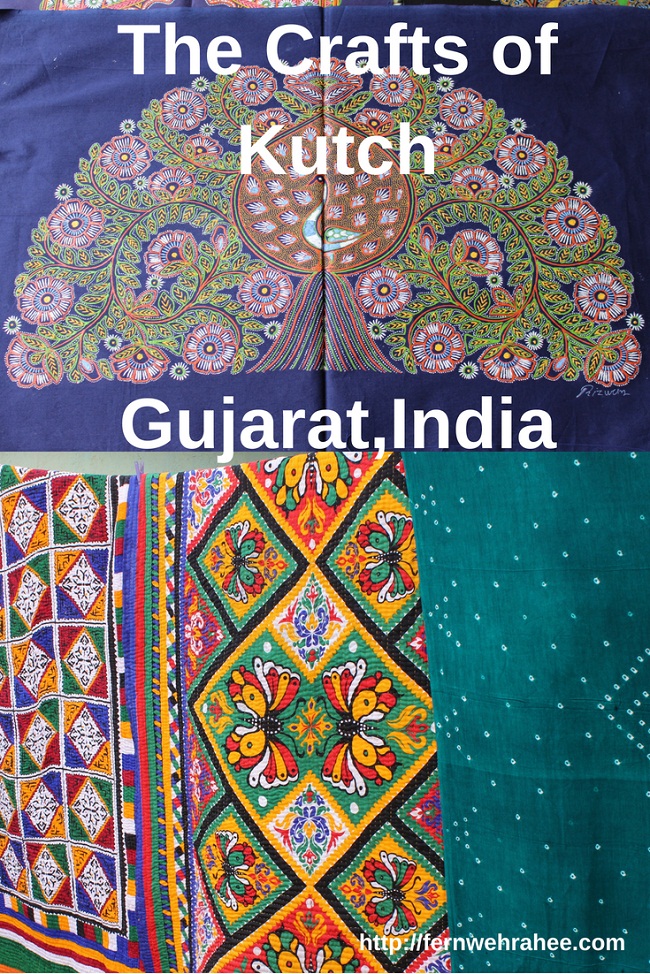



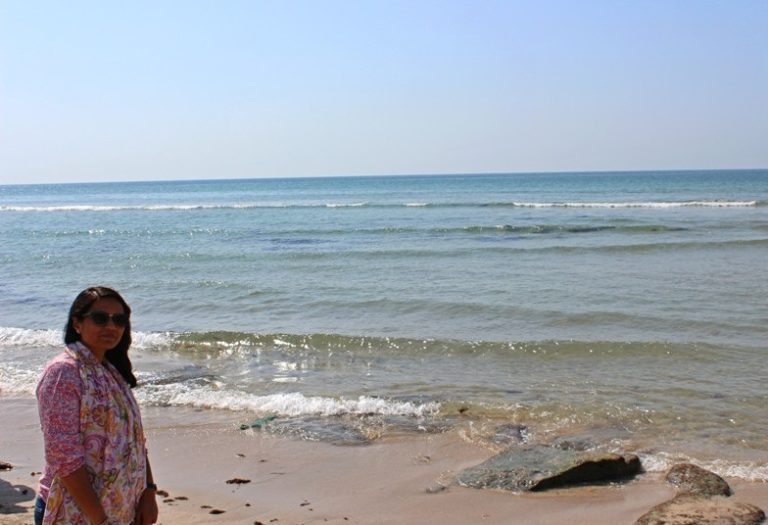
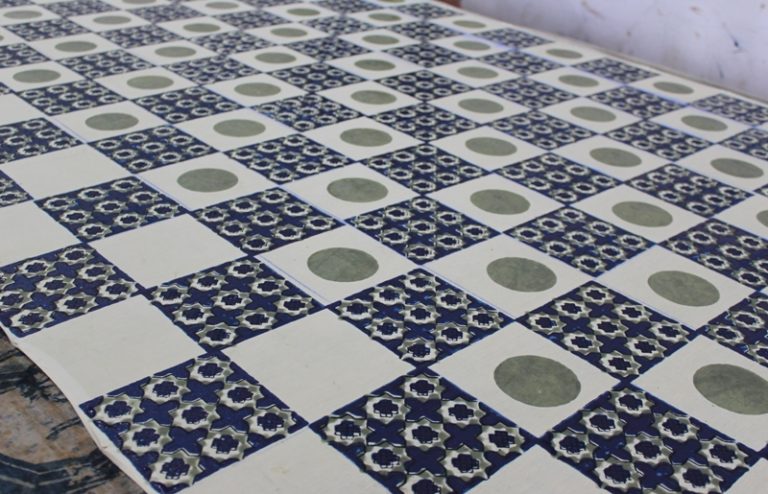
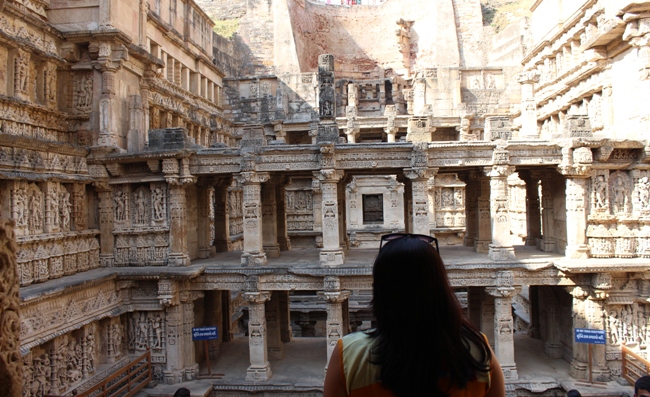
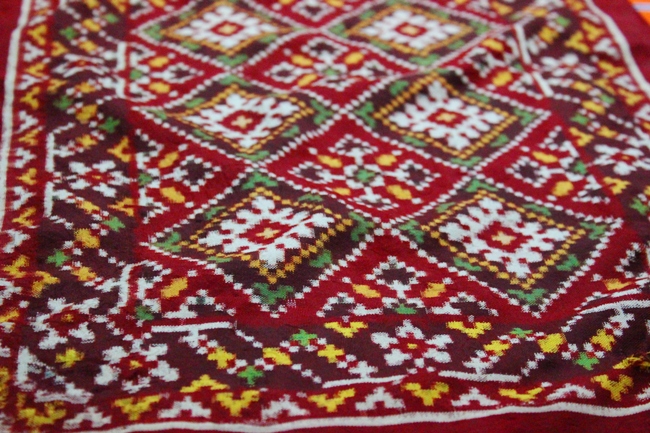
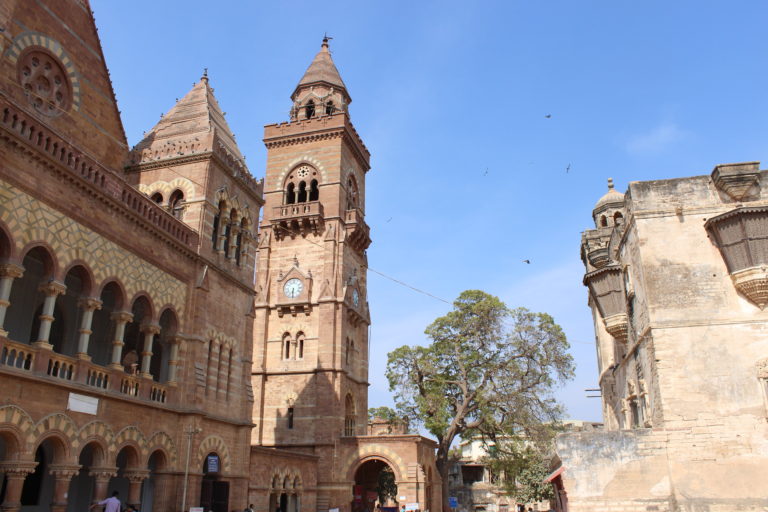
I have never been to Kutch. Great to know about all those artworks and handicrafts. I would love to visit one day 🙂
yeah, If you are planning to visit India It is must visit in Indian state Gujarat
I love this kind of craft! It is really an art!
If my boyfriend would allow me, our house would be totally colorful and full of handicrafts. 🙂
Maybe I can convince him after we visit India!
Bruna
Yeah Bruna, If you are visiting an India; I highly recommend to visit White Rann of Kutch and visit those little art and craft villages
I loved my trip to Nirona! So much talent in such a small and dusty village!
yess really agreed to that
Kutch is beyond pretty. The landscape and art is mind blowing. The fact that natural even natural disasters couldn’t deter their spirit is what makes it so amazing. Lovely photos.
Thank you Ketki. Yess you are right, Kutchh has so amazing arts and nothing can deter their spirit.
kutch is a tour place where u can see a lot a once. Before visiting Kutch once Contact to Mr. Gusai +91 6351007844, +91 9979787783.